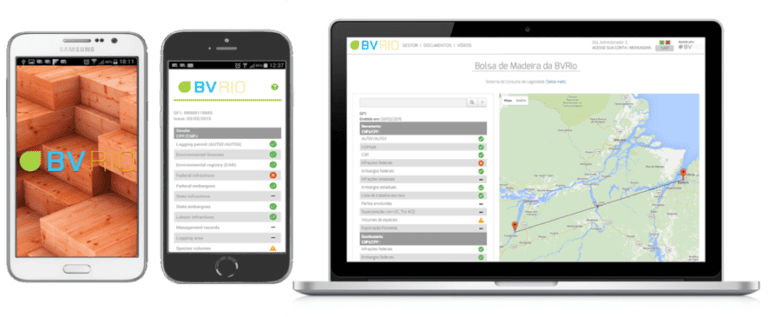- The Responsible Timber Exchange, launched November 23 by the organization BVRio, provides buyers with pricing, supply chain and certification information on timber and wood products coming from several countries, as well as FSC- and PEFC-certified suppliers.
- It builds on BVRio’s other risk assessment tools, available since 2015 in the form of mobile applications and online software.
- The platform’s creators say it will help diminish illegality in the timber sector, which may taint 90 percent of all timber sold.
An online tool now allows timber traders to verify the sustainability of their purchases from important tropical timber countries such as Brazil and Indonesia.
More than ever before, global consumers are demanding products made from responsibly sourced timber, and importers are increasingly being asked to account for where their timber and wood products come from under statutes such as the EU Timber Regulation and the Lacey Act in the US. To help buyers and traders stay in step with those trends, the BVRio Environmental Exchange unveiled the Responsible Timber Exchange on Wednesday.
“This is the first vehicle that promotes legality [and] sustainability,” said Pedro Moura Costa, the founder and president of BVRio.
The BVRio Institute, a nonprofit organization founded five years ago to come up with market-based solutions to boost environmental compliance, hosts the Responsible Timber Exchange.
Moura Costa said that in the past couple of years, BVRio had been asked by certified timber companies working in Brazil to help them operate more efficiently and economically.
“The illegal operators have such an advantage,” Moura Costa said, making it difficult for more ethically minded timber producers to compete.
“There is no mechanism to favor those that want to procure [timber] responsibility,” he added.

Initially, BVRio came up with a suite of software and mobile applications that, through a simple scan of a permit’s barcode, give buyers the power to follow timber back to its point of origin.
Since those tools were launched in 2015, the organization said that 1 billion data checks have been performed.
“It identifies things that not even an auditor in the field would be able to,” Moura Costa said.
The trading platform launched this week provides pricing information, current market conditions for different types of timber and wood products, and – for wood coming from Brazil – a “Due Diligence and Risk Assessment Report” that details the chain of custody.
Users can check whether timber that was harvested in Indonesia complies with the EU’s Forest Law Enforcement, Governance and Trade, or FLEGT, licensing system. And they can determine if a seller’s products from anywhere in the world have been certified under the Forest Stewardship Council or Programme for the Endorsement of Forest Certification.

The system will soon be updated to allow screening of timber coming from the West African country of Ghana and from Peru, and Moura Costa hopes begin integrating data from further afield. It takes time, he said, as the organizations and agencies working in other countries have different ways of gathering the information.
But he is confident in the results. To test the new platform, Moura Costa and his colleagues looked at businesses found to be violating the law in Brazil’s timber sector.
“We asked ourselves, if we had used our system, six months before the environmental agency found [these companies], would we have detected something wrong?” he said.
The result? “We found out that we were right 99 percent of the time.”
Banner image of the Peruvian Amazon by Rhett A. Butler

